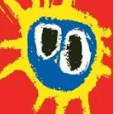Anyone In Chiang Mai whom Speak Phayanak Language
-
Recently Browsing 0 members
- No registered users viewing this page.
-
Topics
-
-
Popular Contributors
-
-
Latest posts...
-
12
Crime Foreigner Buries Dog Alive in Shocking Phuket Incident
So it is still alive? Jesus, who does this sort of thing? What do they charge? There are a few feral hounds around me that would look good in cement. -
12
Crime Foreigner Buries Dog Alive in Shocking Phuket Incident
Jail him for XX years, fine him XXX,000 Baht, then deport and blacklist him. It's tempting to add, "Bury him leaving his head exposed, and then make the area around his face a place that attracts dogs to xxxx on him.", but I wouldn't dream of saying this. -
147
-
1
Australian proof of life form ????
Are you 80? That's the age when they start sending proof of life forms and every 2 years thereafter -
154
Why do people want to live in Isaan?
7/11 is 24 hours. Cute girls in the cities. -
60
Report British Tourist Offers Cannabis Instead of Cash for Bangkok-Pattaya Taxi
Is that for the weed or the money 🤣🤣
-
-
Popular in The Pub

.thumb.jpeg.d2d19a66404642fd9ff62d6262fd153e.jpeg)





.thumb.jpg.08bafad71ee81092af511d2d7aaaf53b.jpg)




Recommended Posts
Create an account or sign in to comment
You need to be a member in order to leave a comment
Create an account
Sign up for a new account in our community. It's easy!
Register a new accountSign in
Already have an account? Sign in here.
Sign In Now